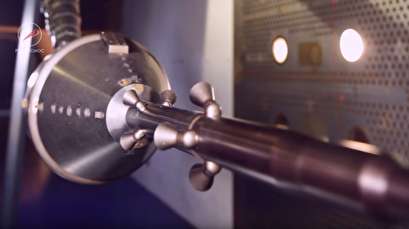The spacecraft, called PTK Federation, has been meticulously developed during the past decade. It is being designed to eventually replace the Soyuz in manned missions and also to serve as a space freighter to supply orbital stations like the ISS.
In late April three scale models of Federation were delivered to the facilities of TsAGI, or Central Aerohydrodynamic Institute, a leading Russian aviation and space laboratory. The lab has since been testing how the future spacecraft fares under enormous stress during launch and reentry phases.
According to an industry source cited by the news agency TASS, the most serious tests in the TsAGI hypersonic wind tunnel have been successfully completed while those involving supersonic flows would continue until the end of the year.
The design of Federation differs from other manned spacecraft because its launch vehicle is not supposed to have a fairing to protect the payload from air flow during launch. Its return capsule is also expected to withstand reentry after a lunar mission with little to no breaking, which means it will have a considerably higher speed when returning to earth than after a low-Earth orbit mission. The capsule must also protect the crew if something goes wrong during a launch.
All these requirements mean the spacecraft needs to withstand the pressure and temperature resulting from a high-speed air flow coming from pretty-much any direction, and the testing in the wind tunnels gives engineers ideas about what exactly those pressures and temperatures will be. The models used are sized about 1/20 of the real thing and are riddled with sensors taking the necessary measurements.
 TEHRAN,
TEHRAN,